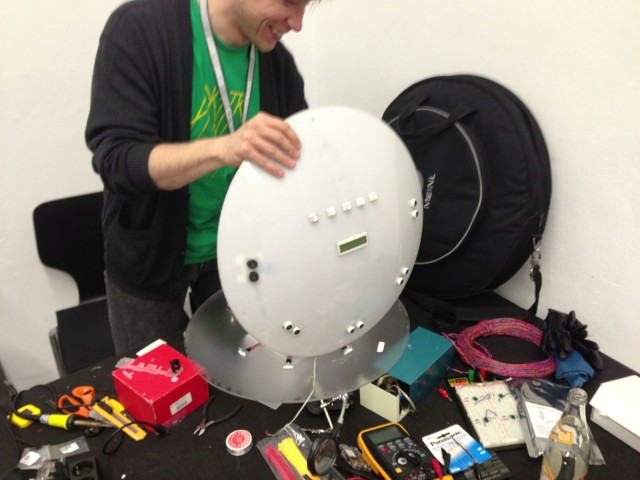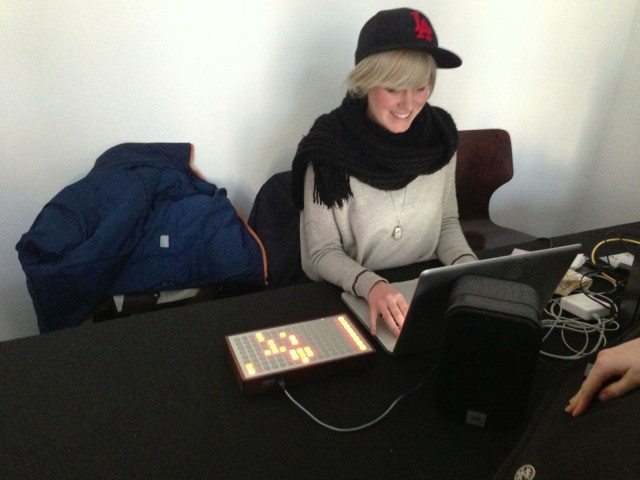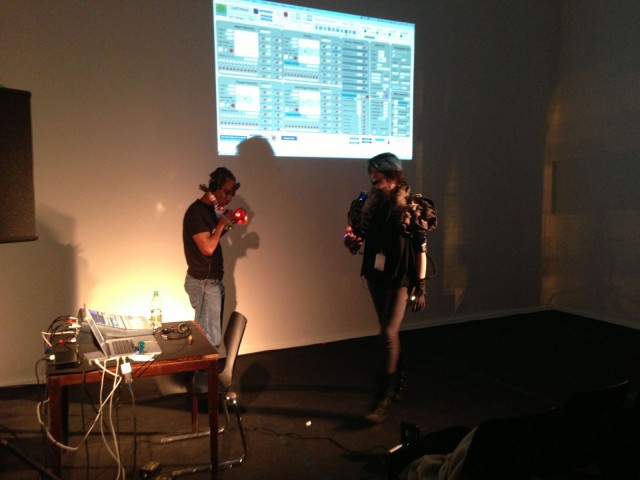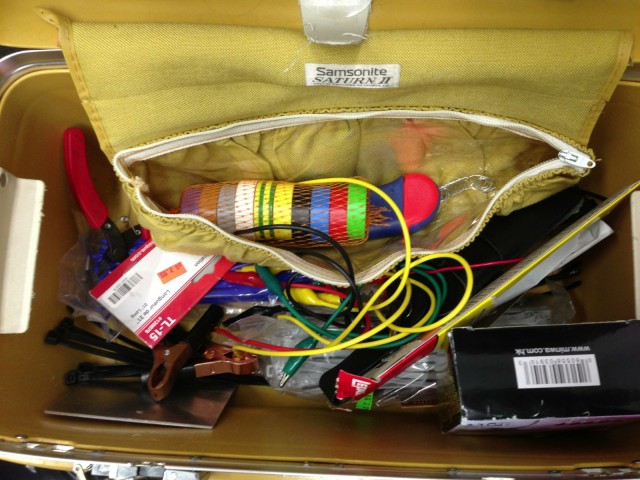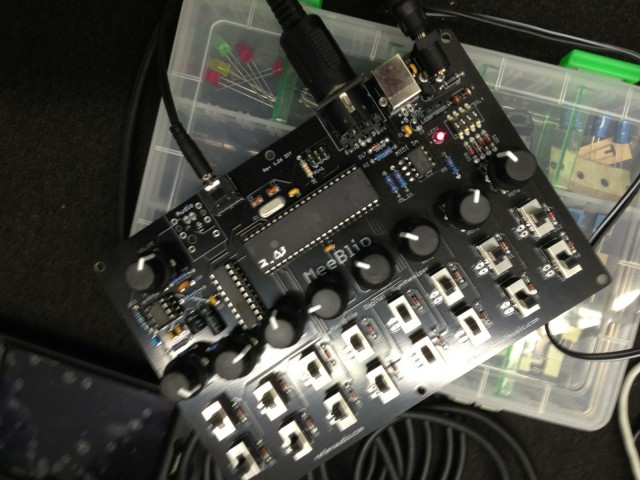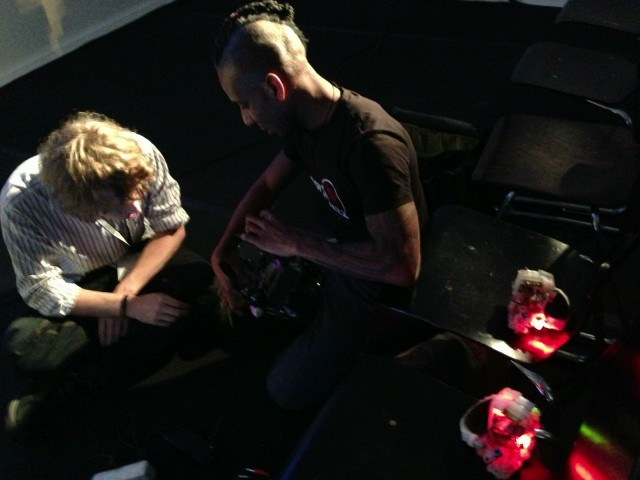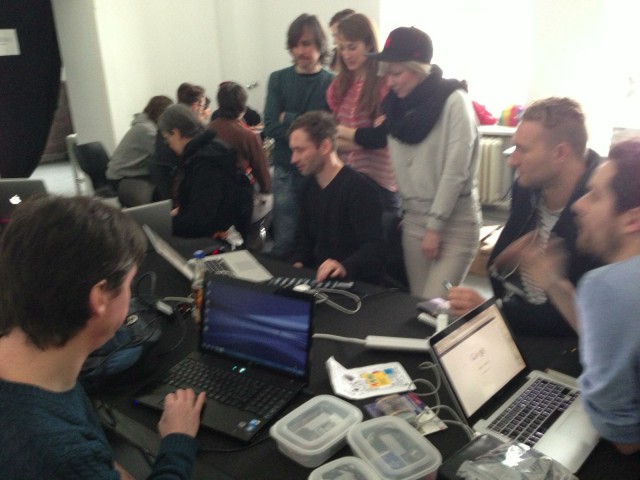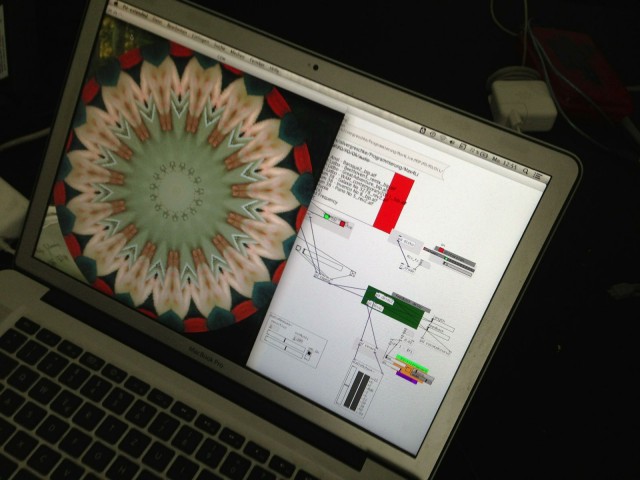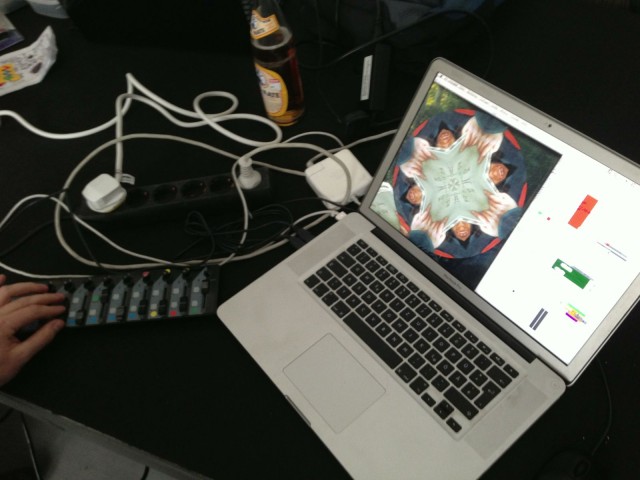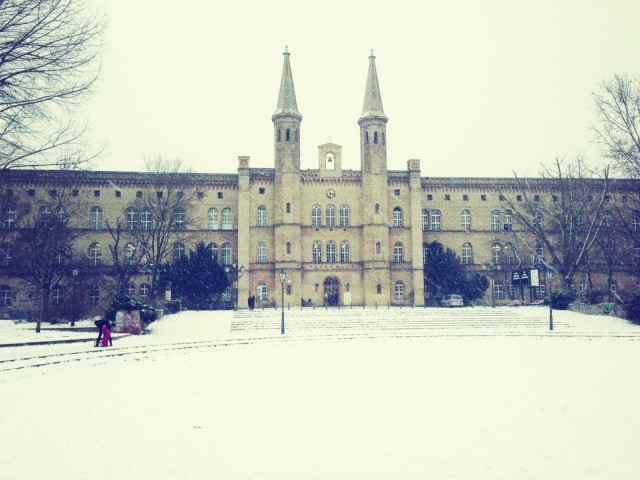It’s a wonderful time to be experimenting with technology and music. You can create something that looks like the stuff most people imagine as “the future” – elaborate dances of light, power over sound just by waving your hand, software that seems directly out of Star Trek. But you can do it with technology that is now reaching maturity – decades of experience of artists, engineers, and designers is at your back.
“That’s not new,” someone might say. Exactly. Instead of technology being a disposable commodity, forgotten in a couple of years, it’s actually something you can get good at. And a good thing, too. Musical practice has always been about something to which you devote a lifetime, not a two-week sprint. And pulling off cross-media technologies can be demanding of a lot of skills: brush up on your sewing, learn about conductive textiles, refresh your knowledge of physics and electronic circuits, work out the nuances of relays, practice your music theory, and refine your coding skills, and you just might be able to pull it off.
That also means teaming up with others is a very good idea. I’ve long admired (and covered) the Music Hackdays, since their creation. Those events, though, often draw people for whom coding is a day job, and focus on Web music tech. For the Music Hacklab at Berlin’s CTM Festival, working with the CTM staff and co-organizer Derek Holzer, we wanted to concentrate exclusively on creation and performance – things you do live and in person as composers and musicians. And we’ve gathered some select people to work on the project, whose background spans electronics, VJing, and musicianship to fashion and acting.
It’s already been an intense couple of days. And within minutes, we had Ableton Live triggering lightbulbs, demonstrated here by participants Darsha and [CDM MeeBlip summer intern] Arvid:
Berlin neighbors Native Instruments and Ableton have given us support for the event, including quenching hacker desires for hardware and my insatiable thirst for Club-Mate. (These posts aren’t gonna write themselves.)
And we have some extraordinary things happening. Imogen Heap arrived yesterday with a team from London to talk about wearable interfaces. Today, she showed off her sophisticated live performance rig; drawing on the work of other fashion tech creators, she’s built something unmistakably linked to her performance idiom and musical voice. It involves a complex lexicon of gestures and cues that allow her to perform or compose music away from the computer. Today, she began working with participants to try out the system themselves.
We’ve also begun a series of presentations by artists and developers on how they work.
We have proper video coming of some of these events. In the meantime, I just wanted to share some early reflections and images, as we edit.
I can tell you, though, for all the planning and organization, I’m always amazed at what people can do once you can get them in the same room. Someone with a particular technical skill in coding may meet the performer contact they need; someone working on the visual component of a project may find the person who can think about sound.
And then you know things will happen as people meet. For instance, it was a lot of fun watching Imogen jam yesterday with Onyx Ashanti, two artists working in wearable tech.
You don’t need to miss out. This is just our first attempt at doing something with this particular structure, and I’m certain it won’t be the last. We’ll be doing this here in Berlin through the end of the week, and we’ll have a wiki and video and other resources for you coming as the week’s events are completed, so we can connect to the community beyond CTM and Berlin.
